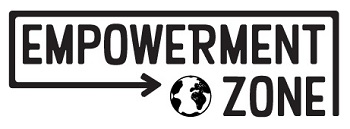Story by Biome's Online Manager: Some of the Biome team recently attended a screening of the documentary BAG IT, which was promoted by Queensland Conservation and
TAKE 3.
We learned how garbage and litter flows from our
waterways out to sea and the harm it causes to water birds and sea life as well
as our fragile ocean eco systems.
 Turtles, who apparently eat everything, are
attracted to floating plastic bags because they look like jelly fish. While, all over
the Pacific, albatross chicks are fed junk by their parents who mistake pieces
of plastic for food and bring them back to their young. On this diet of human
trash, every year thousands of baby birds die from starvation, toxicity, and
choking. Carcases of these birds are
found decaying with bits of plastic sitting in their stomach cavities still
perfectly in tact.
Turtles, who apparently eat everything, are
attracted to floating plastic bags because they look like jelly fish. While, all over
the Pacific, albatross chicks are fed junk by their parents who mistake pieces
of plastic for food and bring them back to their young. On this diet of human
trash, every year thousands of baby birds die from starvation, toxicity, and
choking. Carcases of these birds are
found decaying with bits of plastic sitting in their stomach cavities still
perfectly in tact.
TAKE 3 is “A Clean Beach Initiative” where you are encouraged to take at least
3 pieces of rubbish when you leave the beach, waterway or anywhere. You may not
have put the rubbish there but you have the ability to take it away and make a
difference. If we participate in this simple act and pass on this message we
can help stop the damage our litter is causing to our fragile oceans and
waterways.
There is no "away"
The documentary BAG IT is a light hearted look at the effect our addiction to single use packaging has in the
world. We saw that although we think we are doing the “right thing” by
recycling, most plastics are in fact not recyclable and get filtered into
landfill. Further, a huge amount of our “unwashed” plastics are being shipped to China and India to be
processed in deplorable conditons. Container ships are full when they come
here carrying fast moving consumer goods, but they are empty on the return leg. This makes it an inexpensive prospect to ship our garbage around the world to
be processed by cheap labour, starting with sorting the heaps of stinking waste.
The better solution is clearly to avoid plastics in the first place, or to re-use plastics many times before they are sent to "recycling".
Things you can do
- TAKE 3 - pick up other people's rubbish. We can greatly reduce the amount of marine debris in our oceans by preventing it from getting there in the first place.
- Reduce & re-use - use your reusable shopping bags and Onya Weigh grocery bags instead of plastic bags.
- Take your own container to the grocery store and shop from the Deli for meats and cheeses, or take them to the take-away from where you buy lunch and Friday night Thai. You can use stainless steel lunchboxes or glass containers that are BPA free.
- Sign a petition to support the introduction of acontainer deposit system in Australia which will significantly increase the recycling rates of glass, plastic and aluminium drink containers.
- Small plastic caps are not recyclable for many reasons, so although it's hard to believe, the responsible consumers are the ones who throw their plastic caps and lids into the rubbish instead of the recycling bin! For this reason, try not to buy things with small plastic lids or get creative with them instead of throwing them away.
- Watch the BAG IT documentary. Find our where it is screening in Australia hosted by Tim Silverwood or visit the official BAG IT movie site.
You know how handmade
soap gets all goopey on a soap dish? It’s
because the soap sits in water and makes your lovely soap disappear faster. You
can make this little soap dish with plastic lids that would usually be thrown
away, to keep your soap dry by allowing excess water to drain away faster.
Here's another
cool way to reuse your plastic drink bottles and lids. Vertical herb gardens are great
for small spaces like balconies.



































